Pastoral idyll, 1855
Oil on canvas, cm 138 x 84
With frame cm 152 x 98
Bibliography: Orlando Grosso, Francesco Gandolfi, S.E.A.I, Rome-Milan, 1925, p. 24, tav. 11.
Born in Chiavari on 8 July 1824 by Giovanni Cristoforo and Teresa Solari, Francesco Gandolfi spent his childhood and early youth in the town of Liguria and in the villa on the hill of San Lorenzo della Costa. His father, a lawyer and man of profound culture, was deeply interested in art, archaeology and numismatics, practicing, in an amateur way, painting. It was the father figure who started the young Gandolfi to art, leading him to perfect himself in drawing in Genoa alongside the painter Rosa Bacigalupo. In 1834 Gandolfi was enrolled at the Accademia ligustica di belle arti, where he had as teachers Francesco Baratta for painting and Giovanni Fontana for figure. In 1840, the young artist went to Florence - a traditional journey for Ligurian artists - where he attended the studio of Giuseppe Bezzuoli, author of paintings with historical-evocative subjects and valuable portraits. He was also a pupil for five years of the Academy of fine arts, where Bezzuoli taught. The next stage of Gandolfi’s training was Rome, where he could devote himself to the study of classical and modern art. The drawings and watercolors depicting farmers and inhabitants of Ciociaria, many of which are preserved in private collections Genoese, are the only documents left of the Roman stay. The independence movement of March 1848 distracted him from his artistic activity, prompting him to enlist as a volunteer in the Roman university battalion. The patriotism that animated him is well witnessed by the pencils on the back of some of his works - for example, the sketch (Genoa, private collection) for the painting with S. Filomena that he should have performed for the church of Nostra Signora dell'Orto in Chiavari but did not paint - which, as a kind of diary, collect personal memories in relation to contemporary historical events. In 1849 he moved permanently to Genoa where, from 1850 and for a decade, took part in the exhibitions of the Society promoter of fine arts. The promoter - founded, among others, by the father of the painter who in 1848 had drawn up its social statute - introduced into the city heterogeneous influences, due to the participation in the exhibitions of artists from different centers, that helped to develop also in the Ligurian capital the school verista, result, on one hand, of the transformation of history painting and, on the other, of the evolution of that of gender, custom and landscape background.
The personality of Gandolfi matured in the context of that evolution from romanticism to naturalism and which underlined the progressive decline of the historical school. He joined in these years the "grey school", so called for the preference for soft shades and for the rejection of black, in favor of a soft natural brightness. The artist’s early work includes some family portraits, preserved in Genoa by his heirs, such as the Portrait of his sister Maria and her mother (both from 1847), or the Portrait of his father (1849), which reveal what is usually called a "natural artistic temperament", although still partly retained in the "conventional forms of school" (Grosso, 1927, p. 26). The artist’s portraits were particularly appreciated by the nobility and the Genoese bourgeoisie, until they were considered "the best in the city in the nineteenth century" (Grosso, 1927, p. 32 e tavv. 3, 9, 19-21). Painted in a dramatic contrast of lights and shadows that highlight the intensity of a face caught in its usual pose, is the portrait of the engraver Raffaello Granara (1854 or 1857: Genoa, Ligustica Academy of Fine Arts). Between the late 1940s and early 1950s, in addition to portraits, Gandolfi produces works of historical and literary subjects, in line with the taste of the time, presenting them within the Promotrici. The cholera epidemic that in 1854 infuriated on Genoa led the artist to take refuge in San Lorenzo della Costa, where, during "forty very sorrowful days" spent with the family, he studied the landscape and animals, Becoming increasingly aware of the value of the French verist movement. In this period he performed works of arcadian taste and bucolic settings, including, in addition to the pastoral Idyll, remember Il ruscello di San Lorenzo alla Costa and Love, both from 1854. From the end of the 1950s, the artist devoted himself mainly to the creation of historical scenes with a romantic taste, which refer to the great episodes of the Italian Risorgimento: it is with an opera of this tenor, Gian Luigi Fieschi reveals the conspiracy to his wife, that Gandolfi participated in the famous National Exhibition of Florence in 1861, being acclaimed and reaching a reputation that definitely exceeds the regional boundaries. In the 1960s, the artist began to devote himself assiduously to religious works, performed for the churches of Genoa and Liguria. The 1856 frescoes in the church of S. Caterina in Varazze - depicting Stories of the life of the saint - open the series of wall paintings that host, on one hand, local ethnographic elements and, on the other, portraits from the real models studied for the occasion. In 1861 Gandolfi decorated the parish church of Albisola Superiore with the Stories of St. Nicholas; in 1869-70 he painted the frescoes for the church of St. Mary of the Garden in Chiavari: in these works the nineteenth-century painter shows himself able to reinterpret the great tradition of Genoese sacred painting of the seventeenth century, from Cigoli to Carlone. In the final years of his career as an artist, Gandolfi represented with his works the newly born Italian state abroad: for the International Exhibition in Vienna in 1873 he prepared, for the entry of the Italian section, the great (lost) allegory of Italy received from Austria (sketch in Genoa, private collection). Gandolfi died in Genoa, the city that saw the entire development of his career as an artist, in August 1873 at the age of 49.
The work in question is part of the contingent of paintings executed between 1854 and 1855: having left the bustle of the city, the artist, in the country villa where he used to spend summers during his childhood and early youth, He creates a series of paintings in which nature is the real protagonist. In the pastoral idyll, two children, immersed in a bucolic natural landscape hold in their hands a single flute in bamboo reed and a flute of Pan, instruments that, since the literature of archaic Greece, are associated with bucolic elegia and are symbolic of an Arcadian world in which nymphs, satyrs and putti live peacefully with the natural environment. Such a work shows the process of Gandolfi’s departure from the dictates of the Italian romantic painting of Hayez and Induno in favor of a fascination and a progressive approach to the solutions of the French realistic painting of Courbet, of which the use of colours and light patterns is taken up.


























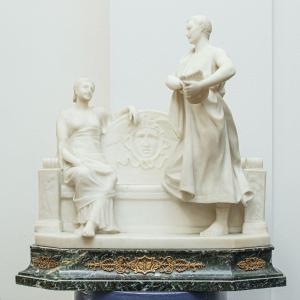
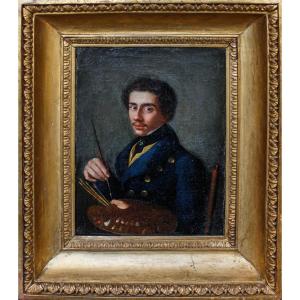


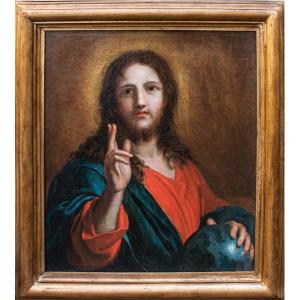
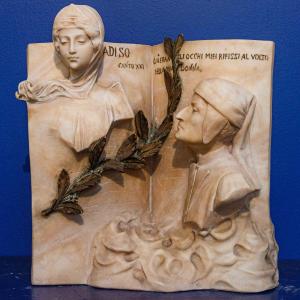

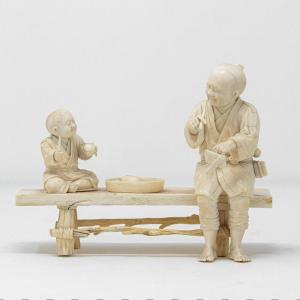
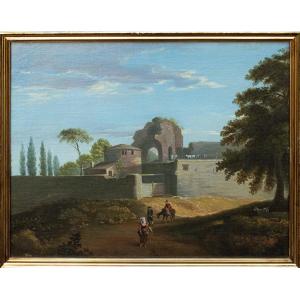

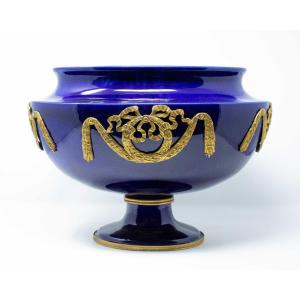

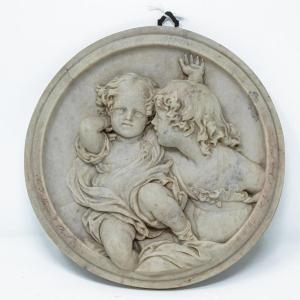

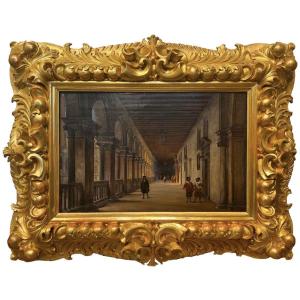
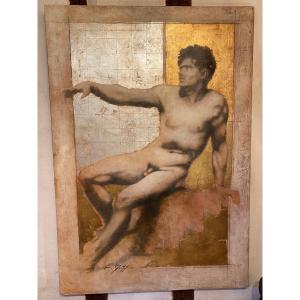


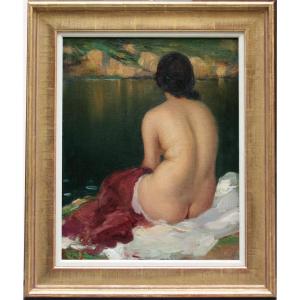



 Le Magazine de PROANTIC
Le Magazine de PROANTIC TRÉSORS Magazine
TRÉSORS Magazine Rivista Artiquariato
Rivista Artiquariato